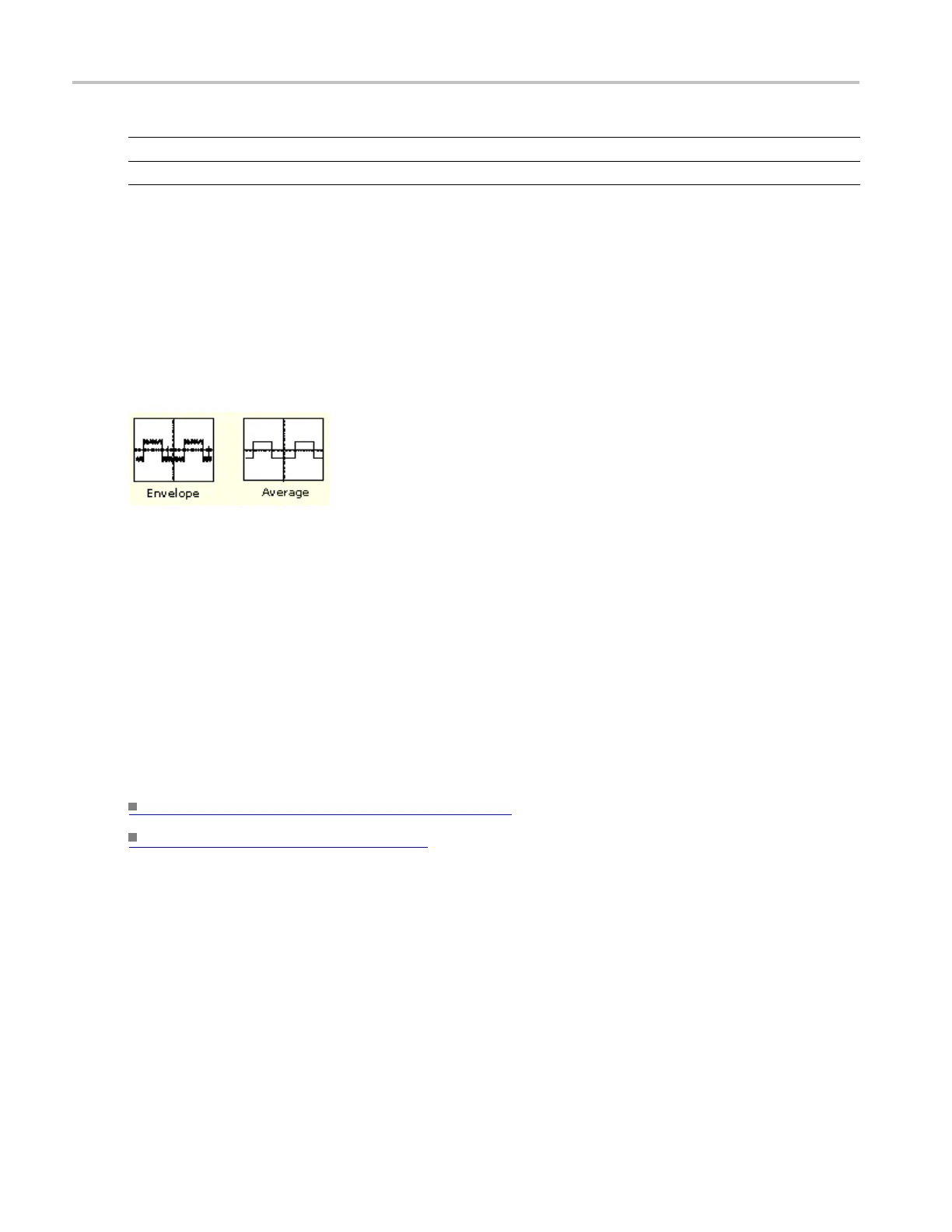Oscilloscope Reference Acquisition mode
Additional r esolu tio n bits
25 S/s
>15 bits 11 Hz
2.5 S/s
>15 bits 1.1 Hz
xxx
Envelope.Th
is mode acquires and displays a waveform record that shows the extremes in variations over
several acquisitions. The instrument saves the highest and lowest values in two adjacent intervals similar
to Peak Detect mode. Unlike Peak Detect mode, the peaks are gathered over many trigger events.
After each trigger event, the instrument acquires data and then compares the minimum and maximum
values from the current acquisition with those stored from the previous acquisition. The final display
shows the most extreme values for all the acquisitions for each point in the waveform record.
Acquiring and displaying a noisy square wave signal illustrates the difference between the modes. Note
how Average mode reduces the noise while Envelope mode captures its extremes:
Average. This mode acquires and displays a waveform record that is the average result of several
acquisitions. T his mode reduces random noise. Use the m ultipurpose knobs to specify the number of
waveforms that you want to average.
WfmDB. Waveform Database mode acquires and displays a waveform that is the accumulation of
several acquisitions. In addition to time and amplitude, the waveform displays a count of the number of
time
s a specific sample point has been acquired. The value at each point on the waveform is a counter
that reflects the hit intensity. The instrument acquires data after each trigger event using Sample mode.
It then determines the location of each s ample point and accumulates it with shared data from previous
acquisitions. This is the only mode that can be used when doing mask testing with an optical standard.
Fast Acq is inhibited in Waveform Database mode.
What do you want to do next?
Learn about Fast Acquisitions mode. (see page 186)
Learn about Roll mode. (see page 188)
838 DSA/DPO70000D, MSO/DPO/DSA70000C, DPO7000C, and MSO/DPO5000 Series

